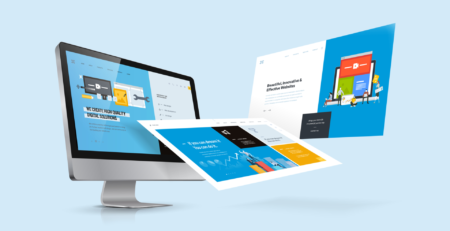The Importance of Digital Brochure Design in Branding
In today’s digital age, businesses are continually seeking effective ways to reach their clients and showcase their brand. One such method is through the use of digital brochures. These online marketing materials offer numerous advantages over traditional paper brochures, including cost savings, environmental benefits, and the ability to track user engagement.
However, the design of a digital brochure is crucial to its success. In this article, we will discuss the importance of digital brochure design, its role in branding, and best practices for creating an effective digital brochure.
Digital Brochure vs. Paper Brochure
While paper brochures have been a staple of marketing for decades, digital brochures offer several advantages over their physical counterparts. Here are a few key differences:
- Cost: Paper brochures require printing costs, which can add up quickly for businesses producing large quantities. Digital brochures, on the other hand, have minimal production costs.
- Environmental Impact: Paper brochures contribute to deforestation and waste production. Digital brochures have a lower environmental impact as they do not require physical materials.
- Distribution: Paper brochures must be physically distributed, which can be time-consuming and costly. Digital brochures can be easily distributed via email, social media, or a company’s website.
- Engagement Tracking: With digital brochures, businesses can track user engagement, including how many people viewed the brochure, how long they spent on each page, and which pages were most popular. This information can be used to improve future marketing efforts.
- Updatability: Digital brochures can be easily updated with new information or graphics, whereas paper brochures require reprinting to make any changes.
Role of Digital Brochure Design in Branding
Digital brochure design plays a critical role in branding as it communicates a company’s identity and values to its audience. A well-designed digital brochure can help establish trust and credibility with potential clients while also showcasing a company’s unique selling proposition (USP). Here are some key elements to consider when designing a digital brochure for branding purposes:
- Logo Placement: The company logo should be prominently displayed on the cover of the digital brochure and throughout the document to reinforce brand recognition.
- Color Scheme: The color scheme should align with the company’s brand guidelines and evoke the desired emotional response from the audience. For example, blue often conveys trust and reliability, while green can represent growth and sustainability.
- Typography: The font used in the digital brochure should be consistent with the company’s brand guidelines and easy to read on both desktop and mobile devices.
- Imagery: High-quality images that align with the company’s brand should be used throughout the digital brochure to engage the audience and support key messages.
- Content Structure: The content should be structured in a way that is easy to follow and guides the reader through the document towards a clear call-to-action (CTA). This includes using headings, subheadings, bullet points, and whitespace effectively to break up text and make it more digestible.
- Consistency: Consistency is key when it comes to branding in a digital brochure. Ensure that all elements of the design are consistent with each other as well as with other marketing materials produced by the company.
- Mobile Optimization: With more people accessing content on their mobile devices than ever before, it’s essential that digital brochures are optimized for mobile viewing to ensure a positive user experience (UX). This includes using responsive design techniques that adjust layout based on screen size and ensuring that images are high-resolution on smaller screens.
- Interactivity: Interactivity: Adding interactive elements such as videos or animations can help engage the audience and make the digital brochure more memorable compared to static documents like PDFs or PowerPoints which may become outdated quickly after creation without being able to update them easily due lack of CMS (content management system) integration capabilities compared o digital solutions where updates can be made quickly and efficiently without needing technical expertise related to coding languages like HTML/CSS/JavaScript etc..
Additionally interactive elements such as quizzes or surveys could help collect data about user preferences helping tailor future marketing campaigns towards specific target audiences leading to higher conversion rates.
By incorporating these features into your design strategy, you will create an engaging experience that encourages users to explore further increasing chances of conversion rates.
Furthermore, using analytics tools provided by platforms like Google Analytics, you can track user behavior providing insights into what aspects of your design resonate most with your audience allowing you refine future iterations accordingly.
This level of insight isn’t possible with traditional print methods.
In summary, investing time into designing an effective digital brokerage not only saves money but also provides valuable insights into customer behavior helping improve overall marketing efforts. By focusing on these eight core principles, you will create an impactful piece of collateral that supports your brand image while effectively communicating key messages to your target audience.




